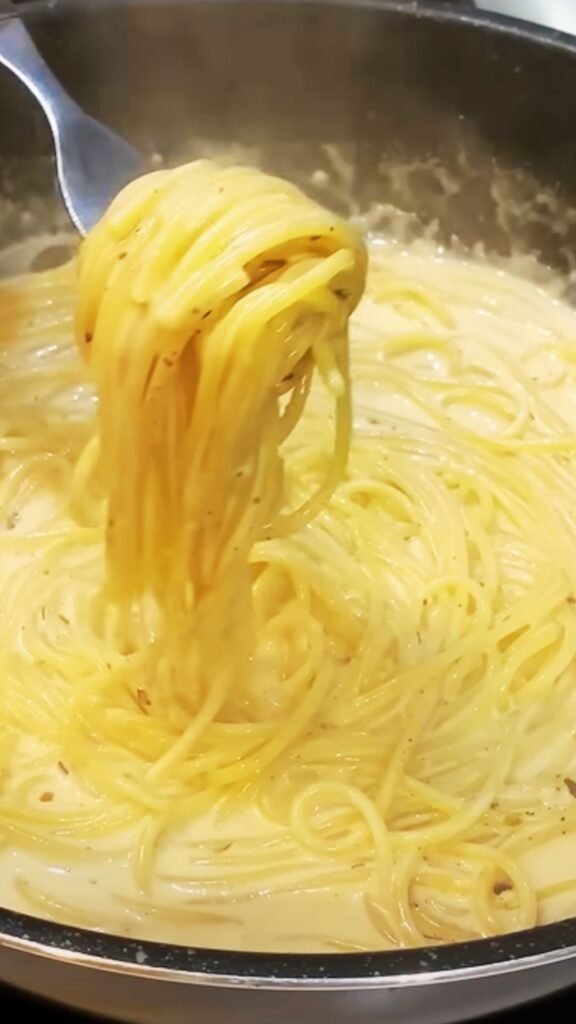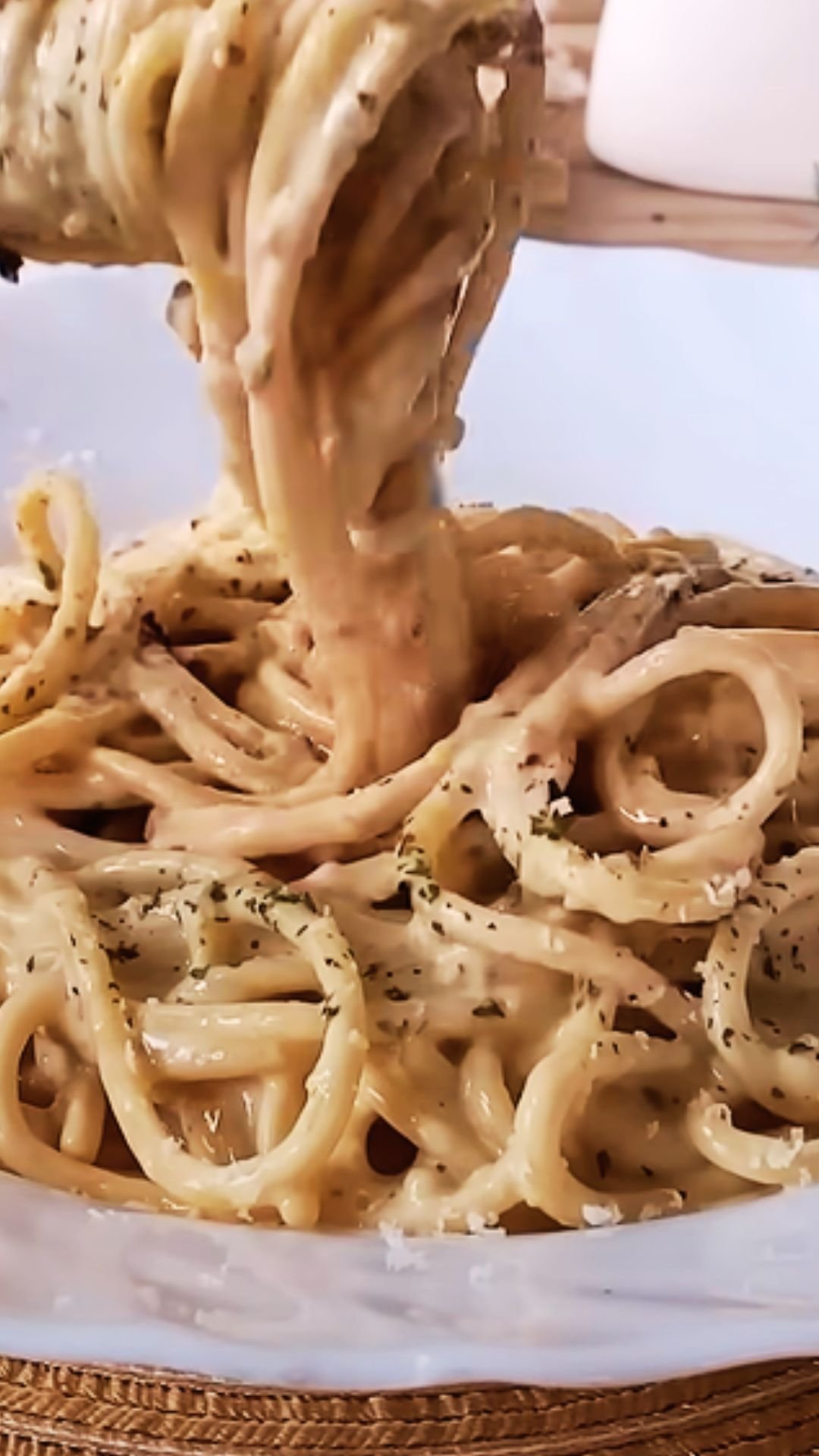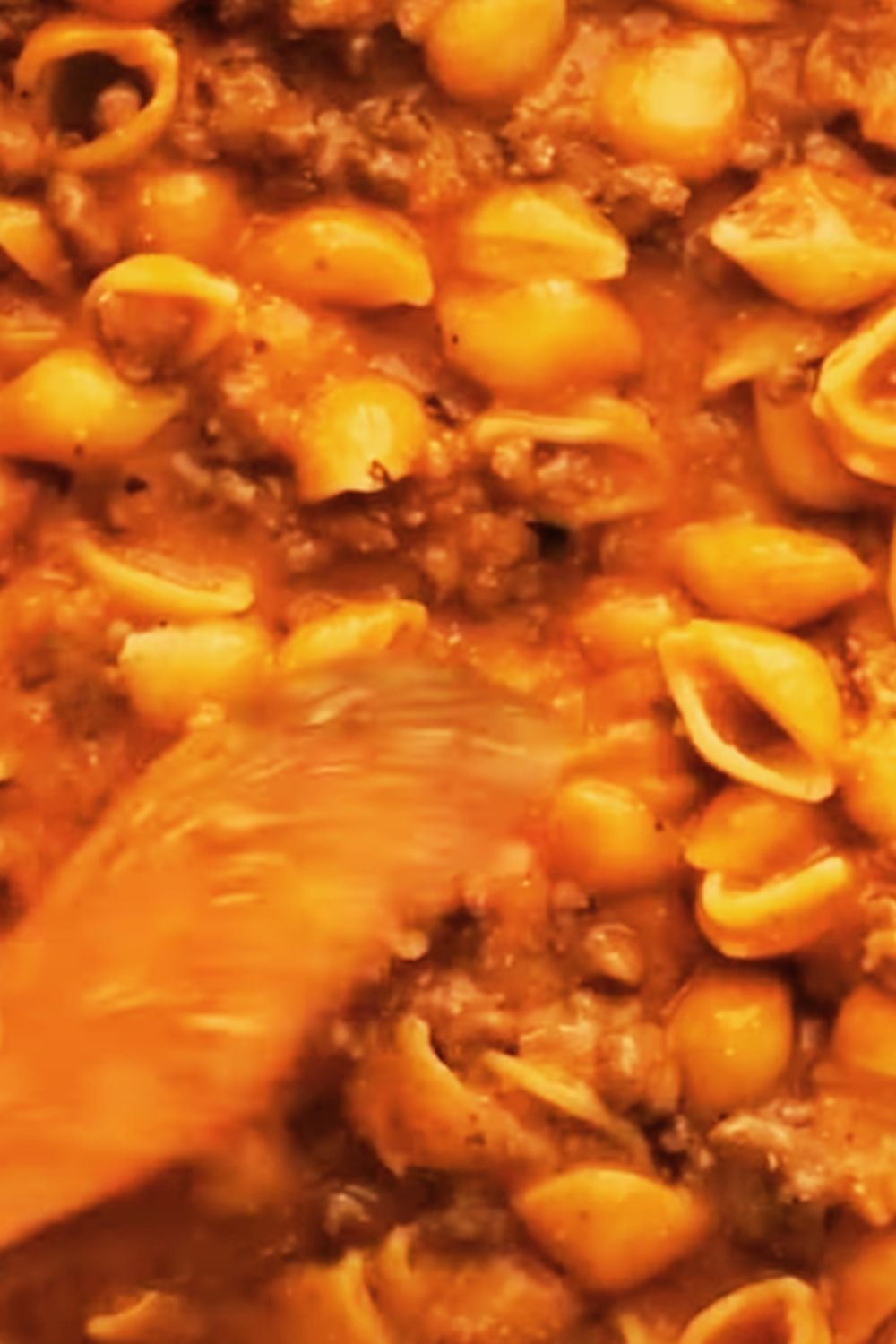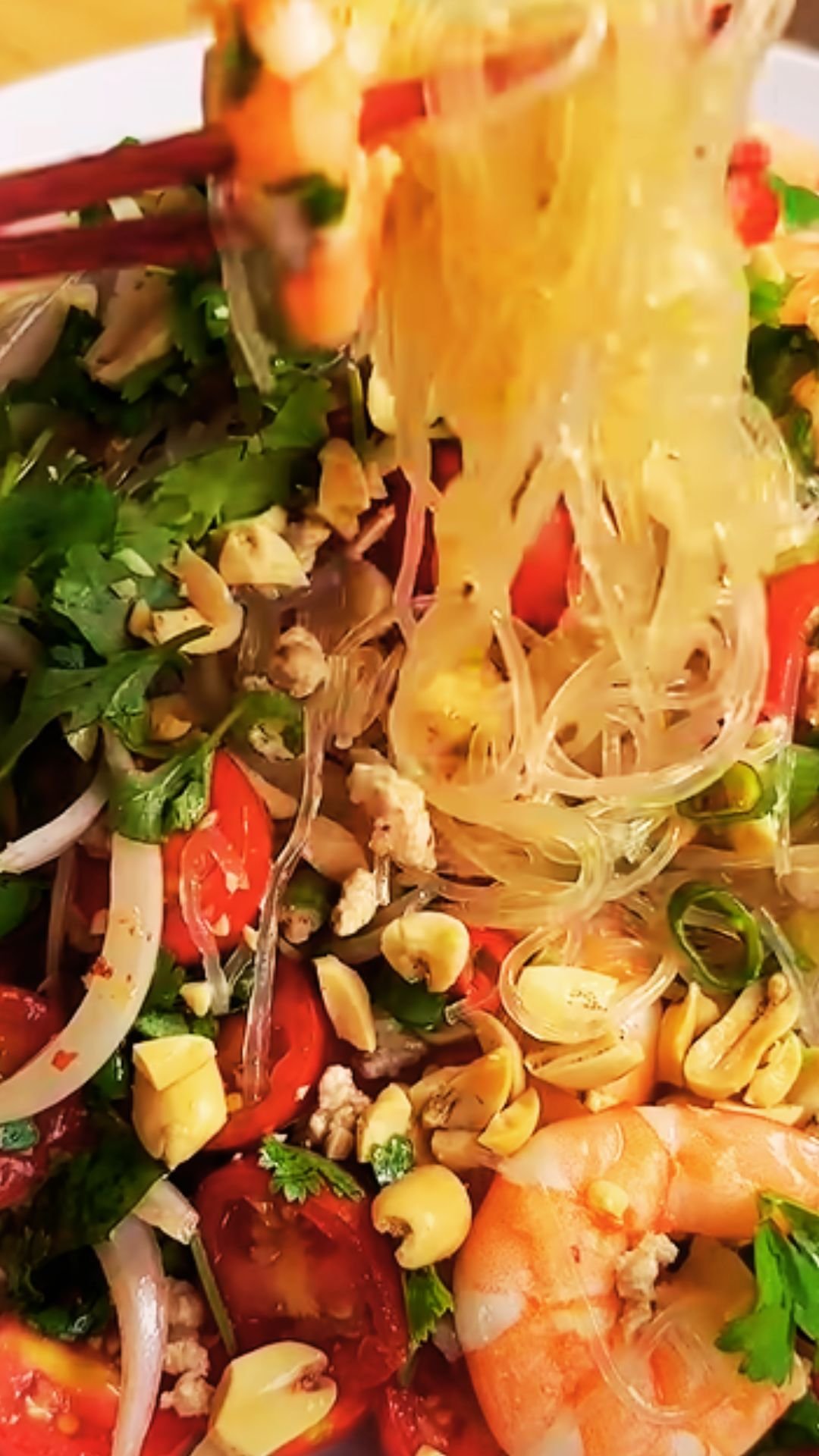There’s something truly magical about the combination of garlic and Parmesan cheese that transforms simple pasta into an extraordinary culinary experience. I’ve been perfecting this Ultimate Garlic Parmesan Pasta recipe for years, and I can confidently say it’s become my go-to comfort food that never fails to impress. Whether you’re cooking for a quiet weeknight dinner or entertaining guests, this dish delivers restaurant-quality flavors with surprisingly simple techniques.
The beauty of this recipe lies not just in its incredible taste, but in its versatility and accessibility. I’ve discovered that with the right balance of ingredients and proper technique, you can create a luxurious pasta dish that rivals anything you’d find in an upscale Italian restaurant. The key is understanding how each component works together to create that perfect harmony of flavors and textures.
Understanding the Foundation
Before diving into the recipe, let me share what I’ve learned about the essential elements that make this dish exceptional. The foundation of any great Garlic Parmesan pasta rests on three pillars: quality ingredients, proper technique, and timing.
Quality Garlic: Fresh garlic makes an enormous difference compared to pre-minced versions. I always use fresh cloves, minced just before cooking to preserve the volatile oils that give garlic its distinctive flavor and aroma.
Authentic Parmesan: Real Parmigiano-Reggiano cheese, aged at least 12 months, provides the nutty, complex flavor that sets this dish apart. The pre-grated versions simply cannot compare to freshly grated cheese.
Pasta Selection: While you can use various pasta shapes, I’ve found that long pasta like fettuccine, linguine, or spaghetti works best because it allows the sauce to coat each strand evenly.
Technique Matters: The secret to achieving that silky, restaurant-quality sauce lies in the emulsification process – combining pasta water with cheese and butter to create a smooth, creamy coating.
Essential Ingredients Breakdown
| Ingredient | Quantity | Purpose | Quality Tips |
|---|---|---|---|
| Pasta (Fettuccine/Linguine) | 1 pound | Base foundation | Choose bronze-die cut for better sauce adhesion |
| Fresh Garlic Cloves | 6-8 large cloves | Primary flavor | Select firm, plump cloves without green shoots |
| Parmigiano-Reggiano | 1½ cups freshly grated | Cheese sauce base | Age minimum 12 months for optimal flavor |
| Unsalted Butter | 6 tablespoons | Richness and emulsification | European-style butter for higher fat content |
| Heavy Cream | ½ cup | Creaminess | 35% fat content minimum |
| Extra Virgin Olive Oil | 3 tablespoons | Cooking medium | Cold-pressed, first extraction |
| Fresh Black Pepper | To taste | Spice complement | Freshly cracked for maximum potency |
| Kosher Salt | For pasta water | Seasoning foundation | Diamond Crystal preferred |
| Fresh Parsley | ¼ cup chopped | Color and freshness | Flat-leaf variety for better flavor |
Step-by-Step Preparation Method
Preparation Phase
I always start by getting my mise en place ready – this French culinary term means having everything in place before you begin cooking. For this recipe, proper preparation is crucial because the actual cooking happens quickly.
First, I bring a large pot of water to boil. I use about 6 quarts of water for one pound of pasta, which might seem excessive, but this ratio prevents the pasta from sticking and ensures even cooking. Once the water reaches a rolling boil, I add a generous amount of kosher salt – about 2 tablespoons. The water should taste like mild seawater.
While the water heats, I prepare my garlic by removing the papery skin and mincing it finely. I’ve learned that crushing the garlic with the flat side of my knife first, then mincing, releases more flavor compounds. The key is achieving uniform pieces so they cook evenly without burning.
Next, I grate my Parmesan cheese using the fine holes of a box grater or a microplane. Freshly grated cheese melts more smoothly than pre-grated versions, which often contain anti-caking agents that can make the sauce grainy.
Cooking Process
Once my pasta water is properly salted and boiling, I add the pasta. I cook it for about 1-2 minutes less than the package directions suggest because it will finish cooking in the sauce. This technique, called “pasta risotto style,” allows the pasta to absorb more flavor.
While the pasta cooks, I heat a large skillet over medium-low heat. This is where timing becomes critical. I add the olive oil and butter, allowing the butter to melt completely without browning. Then I add the minced garlic, stirring constantly. The goal is to cook the garlic until it becomes fragrant and just begins to turn golden – usually about 1-2 minutes. Burned garlic will make the entire dish bitter, so I keep the heat moderate and watch carefully.
The Emulsification Magic
Here’s where the real magic happens. Just before the pasta finishes cooking, I reserve about 1½ cups of the starchy pasta cooking water. This starchy water is the secret ingredient that helps create a silky, cohesive sauce.
I drain the pasta and immediately add it to the skillet with the garlic and oil mixture. Working quickly, I toss the pasta to coat it with the garlic oil, then gradually add the heavy cream, stirring constantly. The heat should be reduced to low at this point.
Now comes the crucial step: I slowly add the grated Parmesan cheese, a handful at a time, while continuously tossing the pasta. If the mixture seems too thick, I add pasta water gradually until I achieve the perfect consistency – the sauce should coat the pasta strands without being gluey or separating.
Advanced Techniques for Perfect Results
Temperature Control
Maintaining the right temperature throughout the cooking process is essential. Too high heat will cause the cheese to clump and the sauce to break. I keep the heat at medium-low once I add the pasta to the skillet, and I remove the pan from heat entirely when adding the final portion of cheese.
Pasta Water Utilization
The starchy pasta water serves multiple purposes in this recipe. It helps thin the sauce to the perfect consistency, aids in emulsification, and adds a subtle salinity that enhances the overall flavor profile. I’ve found that pasta cooked in well-salted water requires less additional seasoning in the final dish.
Timing Coordination
The entire sauce-making process takes only 3-4 minutes once the pasta is added to the skillet. I always have all my ingredients measured and ready before I begin this final phase. The pasta continues to cook in the residual heat of the sauce, so working quickly ensures it doesn’t become overcooked.

Flavor Variations and Customizations
Protein Additions
While the classic version is vegetarian, I often incorporate proteins to make it a more substantial meal:
Grilled Chicken: I season chicken breasts with Italian herbs, grill them until cooked through, then slice and add to the finished pasta. The char from grilling adds a subtle smoky note that complements the garlic beautifully.
Shrimp: Large shrimp, seasoned with garlic powder and red pepper flakes, can be sautéed in the same skillet before making the sauce. I remove them while cooking the garlic, then add them back at the end.
Pancetta or Bacon: Crispy pancetta adds a salty, savory element. I render it first, remove the crispy pieces, and use some of the rendered fat along with the olive oil for cooking the garlic.
Vegetable Enhancements
Sun-dried Tomatoes: These add a concentrated tomato flavor and chewy texture. I rehydrate them in warm water first, then chop and add with the garlic.
Spinach: Fresh baby spinach wilts quickly when added to the hot pasta, providing color and nutrition without overwhelming the dish.
Mushrooms: Sautéed mushrooms, particularly cremini or shiitake, add an earthy depth. I cook them separately until golden, then incorporate them into the finished dish.
Herb Variations
Fresh Basil: Instead of parsley, fresh basil provides a sweet, aromatic note that pairs beautifully with Parmesan.
Fresh Thyme: A few sprigs of fresh thyme, added with the garlic, contribute a subtle earthy flavor.
Oregano: Dried oregano can be added during the garlic cooking phase for a more traditional Italian flavor profile.
Nutritional Information and Dietary Considerations
| Nutrient | Per Serving (1/4 recipe) | Daily Value % |
|---|---|---|
| Calories | 580 | 29% |
| Total Fat | 28g | 36% |
| Saturated Fat | 16g | 80% |
| Cholesterol | 75mg | 25% |
| Sodium | 420mg | 18% |
| Total Carbohydrates | 58g | 21% |
| Dietary Fiber | 3g | 11% |
| Protein | 22g | 44% |
| Calcium | 380mg | 29% |
| Iron | 2.8mg | 16% |
Dietary Modifications
Gluten-Free Version: I substitute regular pasta with high-quality gluten-free alternatives made from rice, corn, or legumes. The cooking technique remains the same, though gluten-free pasta can be more delicate.
Lighter Version: To reduce calories and fat, I use half-and-half instead of heavy cream and reduce the butter by half. The result is still delicious, though less rich.
Lactose-Free Option: Aged Parmesan is naturally lower in lactose than many cheeses, but for those with severe sensitivities, I use lactose-free alternatives or nutritional yeast for a similar umami flavor.
Storage and Reheating Guidelines
Proper Storage
Leftover Garlic Parmesan pasta should be stored in the refrigerator within 2 hours of cooking. I transfer it to airtight containers where it will keep for up to 3 days. The sauce may separate slightly during storage, which is normal.
Reheating Techniques
Stovetop Method: I prefer reheating on the stovetop over low heat. I add a splash of milk or cream and gently warm the pasta, stirring frequently to prevent sticking. This method helps restore the sauce’s original consistency.
Microwave Method: While less ideal, microwaving works for quick reheating. I use 50% power and stir every 30 seconds, adding a bit of liquid if needed to prevent drying out.
Oven Method: For larger portions, I cover the pasta with foil and reheat at 350°F for about 20 minutes, stirring halfway through.
Common Mistakes and Troubleshooting
Sauce Breaking or Separating
This usually happens when the heat is too high or the cheese is added too quickly. If my sauce breaks, I remove it from heat immediately and whisk in small amounts of warm pasta water until it comes back together.
Grainy Texture
Pre-grated cheese or overheating can cause graininess. I always use freshly grated Parmesan and keep the temperature low during the final assembly.
Bland Flavor
Insufficient seasoning in the pasta water is often the culprit. The pasta should be well-seasoned before it even meets the sauce. I also taste and adjust seasoning at the end with salt and fresh pepper.
Pasta Sticking Together
This indicates either insufficient water during cooking or inadequate stirring. I ensure my pasta has plenty of room to move freely in the boiling water.
Serving Suggestions and Pairings
Ideal Accompaniments
Simple Green Salad: A light salad with mixed greens, cherry tomatoes, and a basic vinaigrette provides a fresh contrast to the rich pasta.
Garlic Bread: While it might seem like garlic overload, good garlic bread is a classic pairing. I use a lighter touch on the garlic for the bread to avoid overwhelming the palate.
Roasted Vegetables: Asparagus, broccoli, or zucchini roasted with olive oil and herbs complement the pasta without competing with its flavors.
Presentation Tips
I always serve this pasta in warmed bowls to keep it at the optimal temperature. A final sprinkle of freshly grated Parmesan and a few cracks of black pepper add visual appeal and extra flavor. Fresh parsley not only adds color but provides a bright note that balances the richness.
Wine and Beverage Pairings
White Wines: A crisp Pinot Grigio or Sauvignon Blanc cuts through the richness beautifully. For something more substantial, a Chardonnay with light oak complements the buttery flavors.
Red Wines: Light reds like Chianti or Barbera work well, especially if you’ve added protein to the dish.
Non-Alcoholic Options: Sparkling water with lemon provides palate cleansing between bites. Iced tea or lemonade can also work for casual dining.
Seasonal Adaptations
Spring Version
I incorporate fresh peas, asparagus tips, and lemon zest for a lighter, brighter version that celebrates spring produce. The lemon zest adds a citrusy note that brightens the rich sauce.
Summer Adaptation
Cherry tomatoes and fresh basil transform this into a summer favorite. The tomatoes add acidity that balances the richness, while basil provides aromatic freshness.
Fall Enhancement
Roasted butternut squash cubes and sage create a autumn-inspired version. The sweetness of the squash plays beautifully against the salty Parmesan.
Winter Comfort
During colder months, I sometimes add crispy pancetta and a pinch of red pepper flakes for extra warmth and substance.
Professional Kitchen Tips
Batch Cooking Strategies
When cooking for larger groups, I prepare components separately. The garlic oil can be made ahead and gently rewarmed, while the cheese can be pre-grated and kept at room temperature for easier melting.
Equipment Recommendations
A large, heavy-bottomed skillet distributes heat evenly and prevents hot spots that could burn the garlic. I prefer stainless steel or enameled cast iron for this recipe.
Mise en Place Importance
Having everything measured and ready before starting cannot be overstated. The final assembly happens quickly, and there’s no time to stop and grate cheese or mince garlic once you begin.
Questions and Answers
Q: Can I make this dish ahead of time for a dinner party?
While this pasta is best served immediately, you can prepare some components ahead. I often pre-mince the garlic and grate the cheese earlier in the day. The actual cooking should happen just before serving for the best texture and flavor.
Q: Why does my sauce sometimes turn out grainy instead of smooth?
Graininess usually results from using pre-grated cheese or adding the cheese when the temperature is too high. Always use freshly grated Parmesan and keep the heat low during the final assembly. If your sauce does turn grainy, remove it from heat and whisk in warm pasta water gradually.
Q: What’s the best way to prevent the garlic from burning?
Keep the heat at medium-low and watch the garlic carefully. It should become fragrant and just barely golden. If it starts browning too quickly, reduce the heat or temporarily remove the pan from the burner. Burned garlic will make the entire dish bitter.
Q: Can I substitute the heavy cream with milk or half-and-half?
Yes, though the result will be less rich. If using milk, I recommend adding it gradually and being extra careful with the heat to prevent curdling. Half-and-half works better than regular milk for this substitution.
Q: How do I know when I’ve added enough pasta water?
The sauce should coat the pasta without being thick or gluey. It should look glossy and move freely when you toss the pasta. If it seems too thick, add pasta water a tablespoon at a time until you reach the right consistency.
Q: What pasta shapes work best for this recipe?
Long pasta shapes like fettuccine, linguine, spaghetti, or angel hair work best because they allow the sauce to coat each strand evenly. Short pasta can work but doesn’t provide the same luxurious eating experience.
Q: How can I make this dish spicier?
Add red pepper flakes with the garlic, or incorporate a pinch of cayenne pepper. Fresh cracked black pepper also adds heat. Start with small amounts as you can always add more, but you can’t take spice away.
Q: Is there a way to make this dish healthier without sacrificing too much flavor?
Try using whole wheat pasta for added fiber, reduce the butter by half, or substitute half-and-half for heavy cream. Adding vegetables like spinach or cherry tomatoes increases nutritional value while maintaining delicious flavor.
This Ultimate Garlic Parmesan Pasta represents the perfect marriage of simplicity and sophistication. Through careful attention to technique and quality ingredients, you can create a restaurant-worthy dish in your own kitchen. The key lies in understanding how each component contributes to the final result and respecting the process that brings them together harmoniously. Whether you’re cooking for yourself or entertaining guests, this recipe delivers consistent, impressive results that will have everyone asking for seconds.


